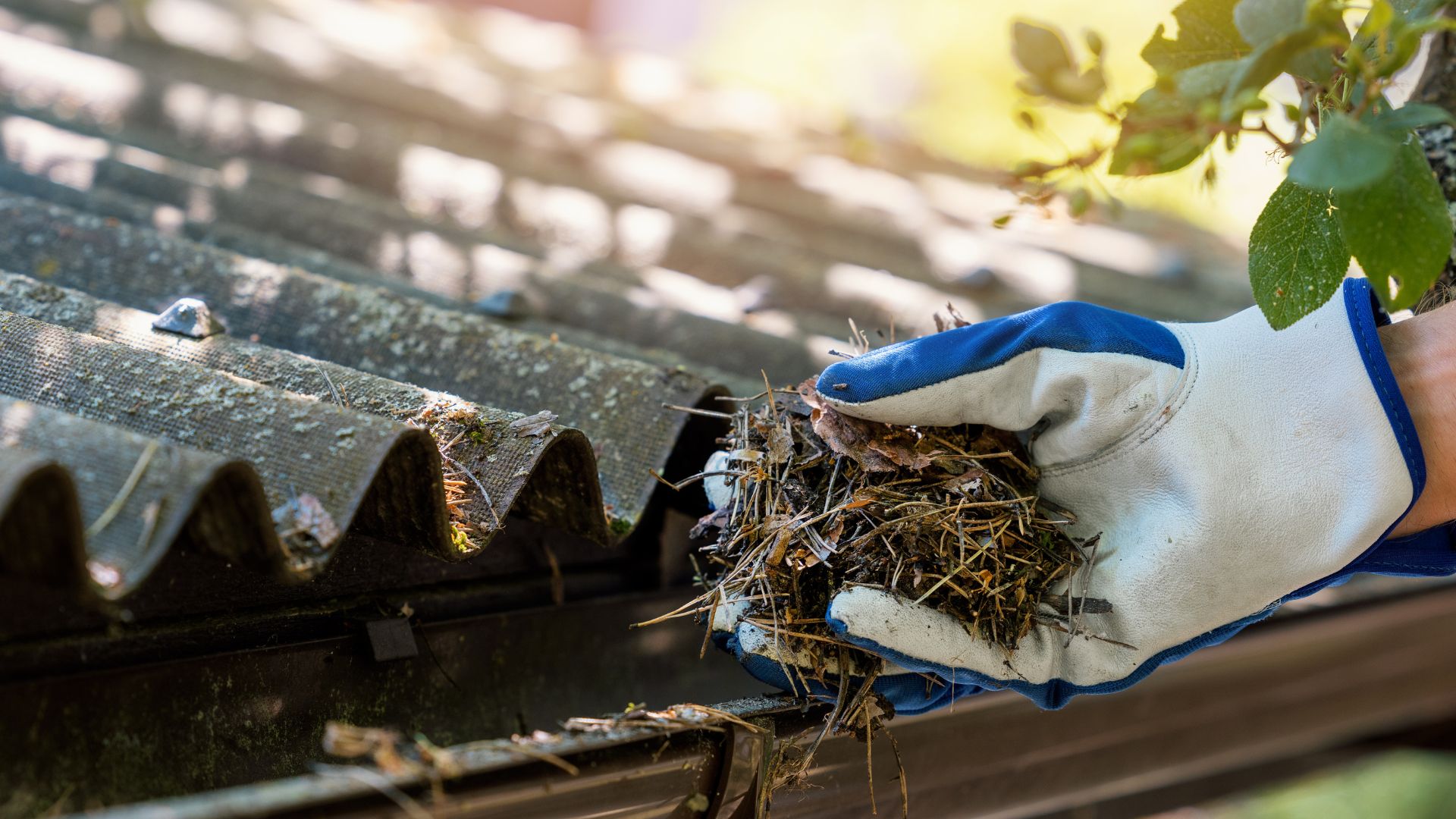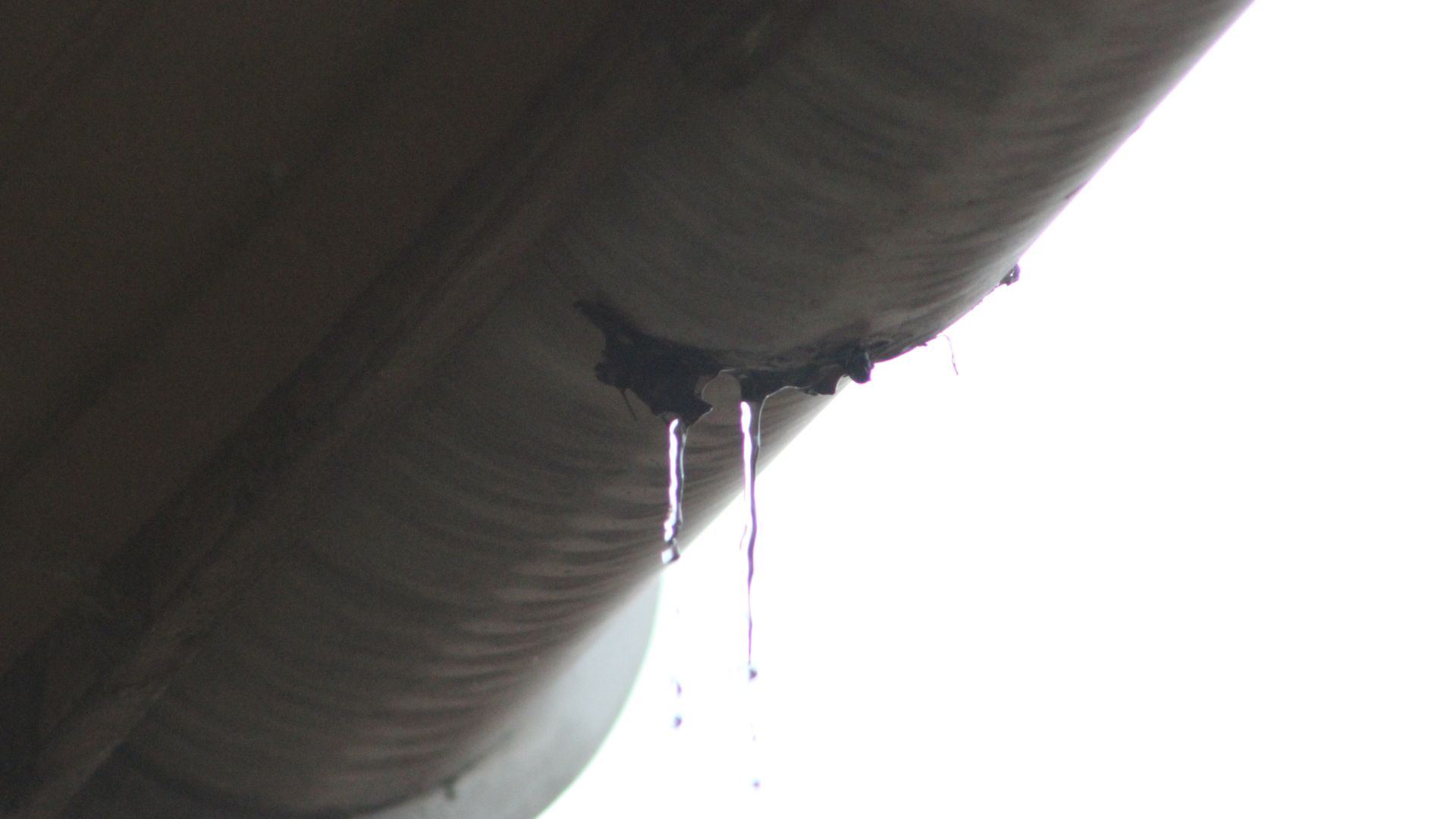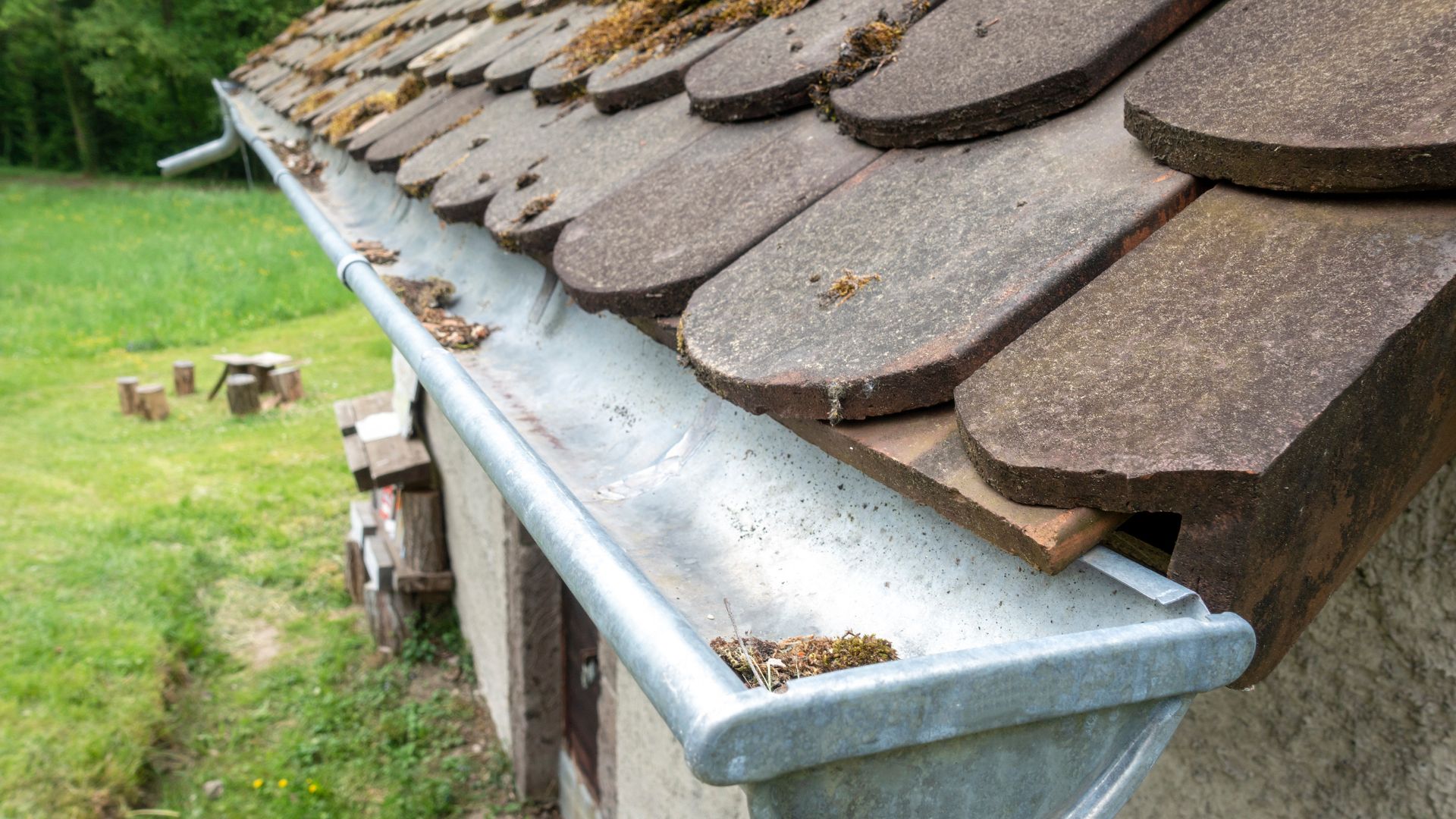When it comes to home upkeep, neglecting your gutters can lead to costly consequences. A clogged or damaged gutter system isn’t just an eyesore—it can wreak havoc on your home’s structural integrity. From water damage to foundation issues, the risks of poorly maintained gutters are far-reaching and expensive.
Gutters play a critical role in directing rainwater away from your home. However, when leaves, debris, or dirt accumulate, they can cause blockages, leading to overflowing water and potential damage to your roof, walls, and landscaping. This is why regular gutter maintenance is more than just a chore; it’s an essential task to protect your property and prolong its lifespan.
In this blog, we’ll dive into the key reasons why maintaining your gutters should be a top priority. From preventing costly repairs to safeguarding your home’s value, we’ll explore the benefits of a well-kept gutter system and how it contributes to a safe, functional, and aesthetically pleasing home environment. Whether you’re a homeowner or a property manager, understanding the importance of gutter care is the first step in ensuring your property remains in top condition year-round.
1. Blocked Gutters and Debris Build-Up
Blocked gutters are a frequent issue caused by leaves, dirt, and other debris accumulation. Overhanging branches and falling branches often contribute unwanted debris to the gutter system, creating a breeding ground for further blockages.

Clogged gutters prevent proper drainage, leading to water ingress and overflow that damages the foundation, fascia boards, walls, or roof structure.
Heavy rainfall or wind-driven rain can exacerbate the issue, especially in roof valleys or low-pitched roofs where debris accumulation is more common. Over time, water pooling due to improper drainage may lead to a leaking roof or water stains on interior walls. Additionally, clogged eaves gutters and box gutters compromise metal roofs and metal roofing materials, making the roof vulnerable to storm damage and structural integrity concerns.
Regular gutter maintenance, including gutter guards and thorough inspections, is key to preventing roof leaks. Roof inspection and cleaning remove aging materials and debris, ensuring the system functions correctly and protects against high winds, severe weather conditions, and potential leaks.
2. Improper Gutter Installation
Improperly installed gutters, especially when installed incorrectly or with improper angles, fail to direct water properly. This creates gaps where water pools, leading to improper drainage and leaky roof problems. Gutters not aligned correctly with the roof valleys or roof penetrations, like vent pipes and pipe boots, allow water ingress and cracks to form.
Roof leaks occur when improper installation leaves gaps or fails to use waterproof sealant or attachments. Missing shingles or damaged tiles in harsh weather conditions worsen the issue. Poor installation also affects the fascia board and roof space, resulting in a musty smell and frequent roof repairs.
Engaging a roofing professional to ensure gutters are installed correctly and maintained helps prevent leaks, water damage, and costly roof restoration.
3. Wear and Tear Over Time
As gutters age, their functionality can decline due to constant exposure to water and harsh weather conditions. Metal roofing materials, eaves gutters, and box gutters are particularly vulnerable to corrosion and damage, especially when proper gutter maintenance is neglected. Rust, sagging sections, and cracks are common indicators of wear that threaten the roof structure and lead to improper drainage.
Aging materials can make gutters susceptible to leaks and sagging, leaving the roof vulnerable to storm damage.
4. Storm Damage and Environmental Factors

Harsh weather conditions, including heavy rainfall, wind-driven rain, high winds, and hail, can cause significant storm damage to gutters. Overhanging branches and falling branches can dent or misalign gutters, creating gaps that lead to water ingress and leaky roof issues.
Improperly installed gutters exacerbate the damage during severe weather, as poor installation fails to withstand the pressure from high winds or debris. Missing shingles, cracked flashing, and improperly sealed joints make roof penetrations like vent pipes and pipe boots vulnerable to leaks.
5. Poor Maintenance Practices
Neglecting routine gutter maintenance creates breeding grounds for clogged gutters and causes roof leaks over time. Ignoring small cracks, failing to inspect vent pipes and joints, or overlooking improperly sealed areas allows water ingress and improper drainage.
Blocked gutters filled with leaves and other debris contribute to potential leaks in low-pitched roofs and roof valleys. Damaged tiles, ageing materials, and improperly installed sections exacerbate roof structure issues.
Without regular inspections by a roofing professional, minor problems like missing shingles or cracked flashing escalate into costly repairs and roof restoration needs. Thorough inspections and promptly addressing minor damages are critical to preventing roof leaks and maintaining properly functioning gutters.
6. Structural Issues with the Roof or Fascia Board
The fascia board and roof structure are interconnected with the gutter system. Issues like rotting wood, damaged roof tiles, or improperly installed shingles create gaps and leave the roof vulnerable to water damage. Improper installation of gutters or poor roof maintenance often leads to roof leaks and costly repairs.
Common roof leaks occur around roof penetrations, including pipe boots and vent pipes, where waterproof sealant or cracked flashing may fail. Misaligned gutters due to storm damage or poor installation increase the risk of leaky roofs. Regular maintenance ensures gutters are installed correctly, roof valleys are functioning correctly, and the structural integrity of the roof is preserved.
7. Corrosion and Rust

Metal gutters, especially those made from steel or iron, are prone to rust and corrosion over time. Exposure to moisture, debris build-up, and harsh weather conditions accelerates this process.
Rust weakens the structural integrity of gutters, leading to small holes or cracks where water can seep through. Over time, these minor issues may expand, resulting in significant leaks and potential water damage to surrounding areas.
Painted or coated gutters can lose their protective layer due to wear, scratches, or prolonged exposure to the sun, leaving the metal vulnerable to rust. Salt-laden air in coastal areas can also speed up corrosion, making regular inspections essential in such environments.
Replacing rusted sections promptly can prevent further damage while applying corrosion-resistant coatings or using rust-proof materials like aluminium can act as a long-term solution. Regular maintenance and cleaning can slow down the rusting process, ensuring gutters remain functional for years.
The Role of Gutter Guards in Leak Prevention
Gutter guards are an essential tool in preventing blocked gutters and reducing debris accumulation. By acting as a barrier against leaves, twigs, and other debris, they help maintain proper water flow and minimise the risk of clogged gutters that lead to water ingress and roof leaks.
There are various types of gutter guards available, including mesh screens, reverse-curve systems, and foam inserts. Mesh screens are ideal for keeping small debris out, while reverse-curve designs direct water into the gutters while deflecting larger debris. Foam inserts fit snugly inside gutters, blocking unwanted debris while allowing water to flow freely.
Installing gutter guards reduces maintenance efforts and protects against storm damage, heavy rainfall, and wind-driven rain. They also extend the lifespan of your gutter system by reducing wear and tear caused by debris build-up and harsh weather conditions.
Professional Gutter Inspections: Why They Matter
Routine professional gutter inspections are vital for identifying potential leaks and structural issues early. Trained roofing professionals conduct thorough inspections to assess roof valleys, fascia boards, and roof penetrations, such as vent pipes and pipe boots.
Hidden damage, such as cracked flashing, improperly sealed joints, or misaligned gutters, is often missed during DIY checks. Professionals ensure gutters are functioning correctly, identifying areas vulnerable to water ingress, blocked gutters, or improper drainage.
Regular inspections help address aging materials, debris accumulation, and signs of storm damage. By catching minor issues, such as water stains or sagging gutters, early, you can prevent costly roof repairs or full roof restoration. A proactive inspection plan is key to preventing roof leaks and protecting the structural integrity of your roofing system.
Protect Your Home from Costly Repairs
Gutters play a critical role in protecting your home from water damage, yet they are often overlooked until a serious problem arises. Leaking or damaged gutters can lead to costly repairs, including foundation issues, mould growth, and structural deterioration. Regular maintenance and timely repairs are essential to ensure your gutter system functions effectively, preventing water from seeping into areas it shouldn’t.
Addressing gutter issues early can save you thousands in repair costs and protect your home’s long-term value. From cleaning debris to fixing minor leaks, simple steps can make a big difference. However, some problems require the expertise of professionals to ensure they’re resolved correctly and efficiently.
Service First provides reliable Roof & Gutter Leaks services to help keep your home safe and damage-free. Our experienced team can inspect, repair, and maintain your gutters, ensuring they handle even the heaviest rainfall. Don’t let small issues turn into expensive headaches. Contact Service First today and let us take the stress out of gutter maintenance, so you can focus on enjoying a safe and secure home.
Frequently Asked Questions: Common Causes of Roof Gutter Leaks in Australia
1. What are the common causes of roof gutter leaks in Australia?
Roof gutter leaks in Australia are often caused by:
- Clogged Gutters: Accumulation of leaves, twigs, and debris can block water flow, leading to overflow and leaks.
- Improper Installation: Incorrectly installed gutters may not align properly, causing water to spill over or seep through joints.
- Damage from Harsh Weather: Australia’s diverse climate, including heavy rainfall and intense sun, can cause gutters to expand, contract, and deteriorate over time.
- Wear and Tear: Aging gutters may develop rust, cracks, or holes, leading to leaks.
- Poor Maintenance: Neglecting regular cleaning and inspections can exacerbate minor issues, resulting in significant leaks.
2. How can I prevent my gutters from leaking?
To prevent gutter leaks:
- Regular Cleaning: Remove debris at least twice a year, especially after autumn and storms.
- Routine Inspections: Check for signs of wear, rust, or damage and address them promptly.
- Proper Installation: Ensure gutters are installed by professionals to guarantee correct alignment and support.
- Quality Materials: Use durable materials suited to Australia’s climate to enhance longevity.
- Install Gutter Guards: These can help reduce debris accumulation and ease maintenance efforts.
3. Why is it important to fix gutter leaks promptly?
Addressing gutter leaks promptly is crucial because:
- Preventing Water Damage: Leaks can lead to water seeping into the roof, walls, and foundation, causing structural issues.
- Avoiding Mold Growth: Persistent moisture can promote mould and mildew, posing health risks.
- Preserving Landscaping: Leaking gutters can cause soil erosion and damage to plants around your home.
- Maintaining Property Value: Well-maintained gutters contribute to the overall integrity and appearance of your property.
4. Can I repair gutter leaks myself, or should I hire a professional?
While minor repairs, such as sealing small cracks or holes, can often be handled by homeowners with the right tools and safety precautions, it’s advisable to consult a professional for:
- Extensive Damage: Significant rust, large holes, or structural issues may require expert attention.
- Complex Systems: Multi-story homes or intricate gutter systems can pose safety risks during DIY repairs.
- Ensuring Longevity: Professionals can assess the overall condition of your gutters and provide solutions that enhance durability.
- How does Australia’s climate affect gutter performance?
Australia’s varied climate impacts gutters in several ways:
- UV Exposure: Prolonged sun exposure can weaken gutter materials, leading to cracks and leaks.
- Heavy Rainfall: Intense downpours can overwhelm gutters, especially if they’re clogged or undersized.
- Temperature Fluctuations: Expansion and contraction due to temperature changes can cause joints to loosen and materials to degrade.
Regular maintenance and choosing weather-resistant materials can mitigate these effects.
6. What materials are best for gutters in Australian homes?
For Australian homes, consider the following gutter materials:
- Aluminium: Lightweight, rust-resistant, and suitable for various climates.
- Zincalume Steel: Combines the strength of steel with corrosion resistance, ideal for harsh weather conditions.
- Colorbond Steel: Pre-painted and durable, offering a range of colours to match home aesthetics.
Selecting the appropriate material depends on your local climate, budget, and maintenance preferences.


